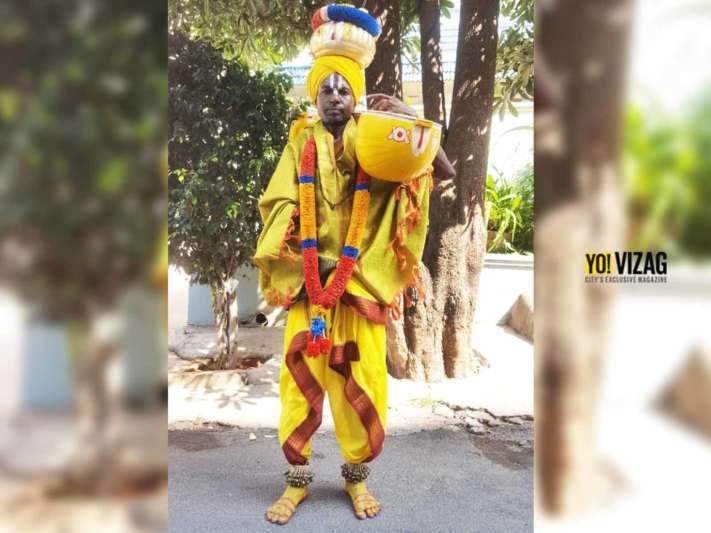
Haridasu
The quintessential Sankranti tradition: The Haridasu in bright vibrant saffron attire with colourful garlands and accessories is compared to sage Narada, the eternal and most dedicated devotee of Lord Vishnu. Hailing from a sect of Vaishnavas (devotees of Lord Vishnu), these devotees roam the streets daily chanting the name of the lord throughout the month preceding Sankranti, the Dhanur Masam. History suggests that the Haridasu tradition began as a part of the Bhakti movement, in an attempt to remind the general public of the glory of Sri Vishnu and to counter the onslaught of ‘foreign’ religions like Buddhism and Jainism.
Contrary to the popular belief that haridasulu are beggars, they are devoted to a unique cause, a cause to revive the name of the lord and remind the layman of the grace of the Almighty. Along with the name of the lord, they also remind one and all to share and donate at least a handful of grains with other.
So this Sankranti, make it a point to mark the festival by celebrating along with a Haridasu.
This post was last modified on 27/01/2022 11:10 am
After a busy week of work or school, unwinding over the weekend is essential. If…
Chief Minister N Chandrababu Naidu has announced an immediate aid of Rs 3,000 each to…
On the solemn occasion of Kargil Vijay Diwas 2024, the Eastern Naval Command in Visakhapatnam…
On 25 July 2024, the Visakhapatnam Port Authority (VPA) welcomed the MV Huahine, the largest…
It's 26 July, and that means it's time to drop everything and salute the bravehearts…
Keen on gaining control over the Greater Visakhapatnam Municipal Corporation (GVMC) after a landslide victory…
Leave a Comment